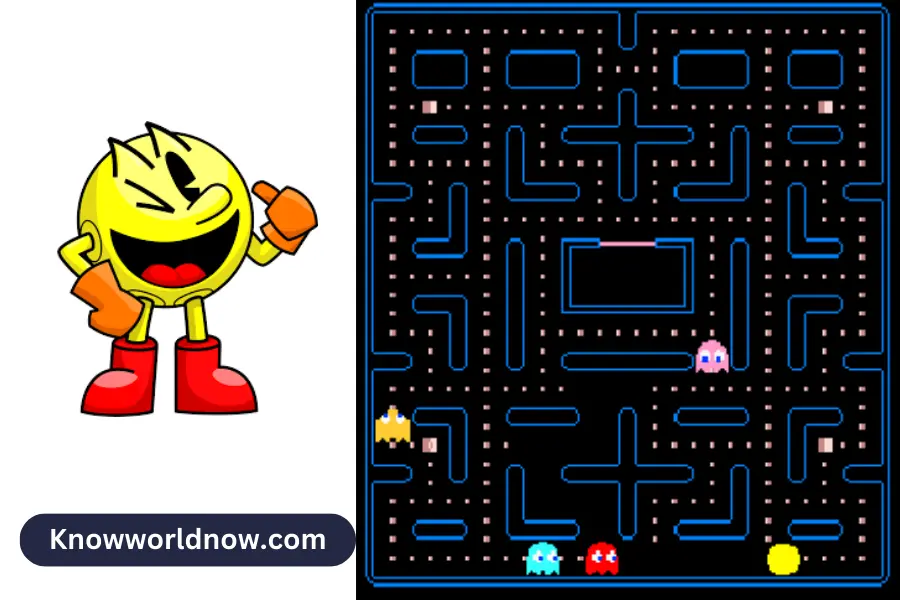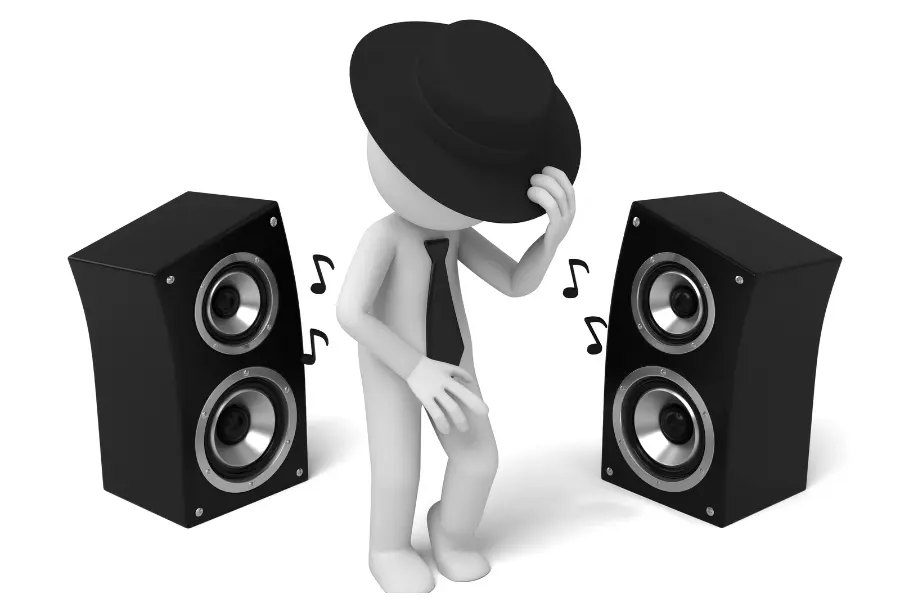The longevity of Pac-Man is undeniable. Despite this, most of us don’t know much more about it. The history of Pac-Man is filled with interesting facts. In this article, we discussed the history and lesser-known facts about Pac-Man.
How did Pac-Man get its name?
Pac-Man was once known as “Puck-Man,” the game’s original name. Puckman is a shortened form of the Japanese word paku, which means “chomp.” Many arcade owners at the time were concerned that vandals might modify the letter P because of its proximity to a specific, explicit four-letter English word. The name “Pac” was eventually proposed as a replacement. Which is why the game was dubbed “Pac-Man.”
Who Invented Pac-Man?
The Japanese firm Namco was the pioneer. Toru Iwatani, one of the company’s employees, wanted to create a video game. His goal was for this game to be noticed. Many games at the time were based on violent plots. Iwatani aimed to develop a fun game for the whole family to enjoy together.
Iwatani also aimed to create a game that would be more welcoming to female players. Video games have always had female and female-identifying players since their inception. However, while Iwatani created his game, men and boys outnumbered women and girls in arcades. Iwatani aimed to broaden gaming’s appeal by introducing new elements.
What was the highest score ever achieved in Pac-Man?
By the middle of 1983, Billy Mitchell and Chris Ayra had completed Pac-Man’s Level 256 in split-screen mode. Mitchell claimed in 1999 to have scored a perfect 3,333,360 points.
Another player, Jake Goldberg, has the record for the greatest score in the 1980 arcade game, with 3,333,360 points after completing all 256 levels in 4 hours and 12 minutes.
What is the origin of the Pac-Man Ghosts Names?
The names of the Pac-Man ghosts in the original Japanese arcade were “Oikake” for Blinky, “Kimagure” for Inky, “Fickle” for Pinky, “Machibuse” or “Ambusher,” and “Otoboke” for Clyde.
Blinky, Pinky, Inky, and Clyde are the names of the Pacman ghosts that will give you a hard time in the arcade. Those, at least, are the Americanized names for the Pac-Man ghosts.
Although Clyde doesn’t exactly finish the rhyme, the Pac-Man ghost is the trickiest since it has Blinky-like tendencies.
Did you know that Inky, the cyan ghost from Pac-Man, was the least likely to appear as expected? Given that they name it “Fickle” in Japan, it makes sense.
20 Lesser-Known Facts about Pac-Man
These 25 Pac-Man facts will blow your mind:
1. The game was originally going to be called “Puckman.”
The term “Puckman,” which is derived from the word “paku,” which means “chomp,” was given to the game by its Japanese designers initially. Because arcade owners were concerned that vandals may change the game’s name to something less harmless, Pac-Man was proposed as a replacement moniker.
2. The creation of Pac-Man took almost a year.
Pac-Man’s creation started at dawn on January 1, 1979. The development cycle was unusually long for a video game of the time, clocking in at a whole year and five months.
3. Pac-Man first appeared in 1980.
Tokyo’s Shibuya district was the first to install Pac-Man arcade machines on May 22, 1980.
4. Pac-Man was initially marketed for female gamers.
Most video games in the 1970s and 1980s catered to males. The developer included special considerations for female players. He had no clue it would be so popular with young women as well as young men.
5. The game was influenced by food.
The removal of a pizza slice served as inspiration for the design of the Pac-Man-like character created by Pac-Man’s designer. It inspired him to imagine a pizza-slice-shaped mouth on a circular protagonist.
6. Prior to being called ghosts, the creatures were monsters.
The ghosts in the early Pac-Man games were represented as creatures with cloaks. (with feet only visible underneath the cloak). Despite their monstrous appearance, they had ethereal qualities, such as the ability to float.
7. In Pac-Man, each ghost has its distinct character.
Pac-Man’s ghosts each have distinct Japanese and English personas. We call them Inky, Blinky, Clyde, and Pinky in English. They go by the names “Fickle,” “Chaser,” “Stupid,” and “Ambusher” in Japanese.
8. The designer of the game lacked formal programming expertise.
When Toru Iwatani joined Namco in 1977, he had no experience as a programmer or interest in designing video games. Pac-Man was designed when he was only 22 years old.
9. Pac-Man’s designer did not profit financially from the game.
Pac-Man’s creator, Toru Iwatani, didn’t profit. He earned no royalties or direct pay since his firm built the game.
10. The game’s meteoric rise to fame surprised everyone.
The game Pac-Man’s success surprised everyone. Women and younger players were first drawn to the game, while veterans shied away from it. Initially, the reaction from the Japanese people was lukewarm at best. Bally/Midway’s distribution of the game in the United States was crucial to its meteoric rise to fame.
11. Within the first 15 months of the game’s debut, fans paid over $1 billion in quarters.
The spread of Pac-Man arcades throughout the United States helped launch the game’s meteoric rise to fame. The kids were eager to spend their hard-earned change on the arcade game.
12. Pac-Man pasta in a can appeared in the early 1980s and quickly became a best-seller.
Chef Boyardee developed Pac-Man pasta. The characters were formed using spaghetti. Cheese, golden chicken, and little meatballs were the three distinct options.
13. Pac-Man’s popularity led to it also being a common word in business.
The phrase “Pac-Man” refers to a hostile takeover defence in which the target company seeks to seize control of the firm that made the offer by buying large quantities of shares.
14. Parents and psychologists were equally worried about the game’s popularity.
As youngsters spent more money on the game, parents worried about its safety. News outlets called the game a “new addiction” for youth. The game’s mental impact on youths also intrigued psychologists.
15. In the game, the pellets are really cookies.
Originally, Pac-Dots were supposed to resemble cookies. The cookies in the newest editions of the game are squares or yellow dots.
16. Over a year after the game’s debut, 100,000 Pac-Man arcades were sold.
Arcade machines sold in the USA skyrocketed after Pac-Man became so popular.
17. Guinness World Records acknowledged the game’s dominant yellow character in 2009.
The Guinness World Records organization has honoured Pac-Man on many occasions. A record for “Most Recognizable Video Game Character” was set in 2009, and the game broke it.
18. In honour of Pac-Man’s 30th birthday in 2010, Google gave him a virtual tip of the cap.
As a celebration of Pac-Man’s 30th birthday, Google put up an interactive doodle on their home search page. You could play Pac-Man and revisit your favourite game!
19. On April 1, 2015, Pac-Man and Google joined for April Fool’s Day.
Google developed a Pac-Man game in 2015 that was playable on Google Maps. Users of Google Maps may play Pac-Man on their displayed map by clicking the Pac-Man button at the bottom of the screen.
20. In 1981, a song titled “Pac-Man Fever” became a smashing success.
Buckner & Garcia released the hit single in 1981. According to the 1982 Billboard Hot 100, the song peaked at number 9.
Conclusion
You’re more intrigued by Pac-Man now that you know its fascinating backstory and other details. Grab a board game or look into a digital version of Pac-Man if you last played a while ago. It’s loads of fun, and maybe even your kids, who know nothing about the game’s history or tradition, will take a shine to it.


![F95Zone Games - The Ultimate Guide for 2021 [F95Z Guide] 3 F95Zone Games](https://knowworldnow.com/wp-content/uploads/2021/07/ArTtW5LrK3b-z-0-y-637f48d86203817a9042a857.webp)


